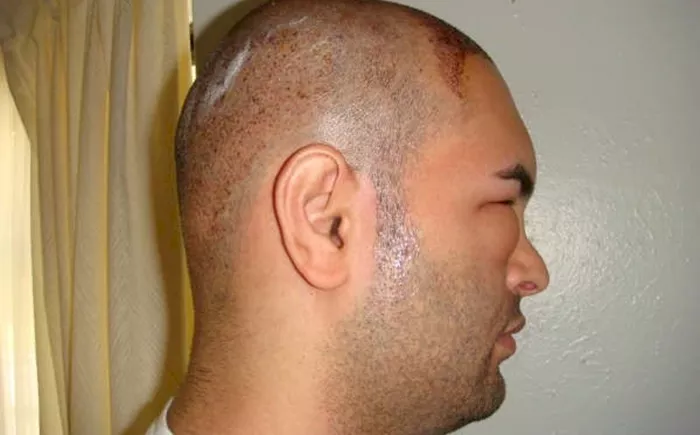Swelling is a common and often temporary side effect following a hair transplant procedure. Understanding how to manage and reduce swelling can significantly improve recovery and overall satisfaction with the results. This article provides detailed strategies and tips for minimizing swelling after a hair transplant, ensuring a smoother and more comfortable recovery.
Understanding Swelling After Hair Transplant
Swelling is a natural part of the healing process after a hair transplant. It occurs as a response to the surgical procedure, where the body sends extra fluids to the treated area to aid in recovery. Typically, swelling peaks within the first 2-3 days post-surgery and gradually subsides over the following week.
Immediate Post-Operative Care
1. Follow Surgeon’s Instructions
Adhering to the post-operative instructions given by your surgeon is crucial. These guidelines are tailored to your specific procedure and individual needs. They will include advice on medication, wound care, and activity restrictions.
2. Keep Your Head Elevated
Keeping your head elevated, especially during the first few days after the procedure, can help reduce swelling. Use extra pillows while sleeping or consider a recliner chair to maintain an elevated position. This position helps prevent excess blood flow to the scalp and minimizes swelling.
3. Apply Cold Compresses
Applying cold compresses to the forehead and surrounding areas can help constrict blood vessels and reduce swelling. Use a clean cloth or ice pack wrapped in a towel. Apply it for 15-20 minutes every hour during the first 24-48 hours post-surgery.
Medication and Treatment Options
4. Use Prescribed Medications
Your surgeon may prescribe anti-inflammatory medications or pain relievers to manage swelling and discomfort. It is essential to take these medications exactly as directed. Avoid using over-the-counter medications without consulting your surgeon, as some can increase bleeding or interfere with healing.
5. Avoid Blood Thinners
Certain medications, such as aspirin and non-steroidal anti-inflammatory drugs (NSAIDs), can increase bleeding and swelling. Avoid these unless your doctor approves them.
6. Use Steroid Creams (If Recommended)
In some cases, your surgeon may recommend steroid creams to reduce inflammation. Apply these as directed to the treated area to help decrease swelling.
Diet and Lifestyle Adjustments
7. Maintain a Balanced Diet
Eating a balanced diet rich in vitamins and minerals can support your body’s healing process. Foods high in vitamins C and K, such as citrus fruits and leafy greens, can help reduce inflammation and promote healing.
8. Stay Hydrated
Drinking plenty of water is crucial for reducing swelling. Proper hydration helps flush out excess fluids and supports overall recovery.
9. Avoid Alcohol and Caffeine
Alcohol and caffeine can contribute to dehydration, which may exacerbate swelling. Limiting or avoiding these substances in the immediate aftermath of the procedure can help manage swelling more effectively.
SEE ALSO: Can Hair Transplant Cause Baldness?
Post-Surgical Activities and Habits
10. Avoid Strenuous Activities
Refrain from engaging in strenuous physical activities, such as heavy lifting or vigorous exercise, for at least two weeks after the procedure. Physical exertion can increase blood flow and worsen swelling.
11. Do Not Touch or Scratch the Scalp
It is important to avoid touching, scratching, or rubbing the treated area. This can irritate the scalp, increase swelling, and disrupt the healing process.
12. Follow Hair Washing Instructions
Follow your surgeon’s instructions on washing your hair. Typically, you should wait for a specified period before gently washing your hair with a mild shampoo. Avoid vigorous scrubbing or massaging of the scalp.
Monitoring and Follow-Up
13. Regular Check-Ups
Attend all scheduled follow-up appointments with your surgeon. These visits allow your surgeon to monitor your recovery, address any concerns, and provide additional guidance on managing swelling.
14. Report Any Concerns
If you notice excessive swelling, severe pain, or any unusual symptoms, contact your surgeon immediately. These could be signs of complications that require prompt attention.
Additional Tips for Reducing Swelling
15. Avoid Hot Environments
Exposure to hot environments, such as saunas or hot tubs, can increase swelling. Avoid these for at least a few weeks post-surgery to prevent exacerbating the issue.
16. Practice Gentle Scalp Massage
Once you receive approval from your surgeon, gentle scalp massage can improve circulation and reduce swelling. Use soft, circular motions with clean fingers to stimulate blood flow.
17. Use a Soft Pillow
Opt for a soft, comfortable pillow that supports your head and neck without causing additional pressure on the scalp. This can help maintain proper elevation and reduce swelling.
18. Consider Anti-Swelling Supplements
Consult your surgeon before taking any supplements. Some, such as bromelain or turmeric, are known for their anti-inflammatory properties and may assist in reducing swelling. However, always get your surgeon’s approval before starting any new supplement.
Conclusion
Reducing swelling after a hair transplant involves a combination of following your surgeon’s advice, making lifestyle adjustments, and utilizing specific treatments. By carefully managing these aspects, you can ensure a smoother recovery and achieve the best possible results from your hair transplant procedure.
Remember, individual recovery experiences can vary, so maintaining open communication with your healthcare provider and adhering to their guidance is essential for optimal healing.

